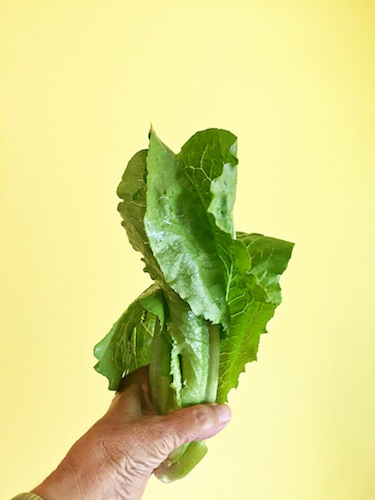The E. coli outbreak in romaine lettuce reported in November might have you wondering how the disease-causing bacteria is also a bacteria that naturally lives in your intestine.
Escherischia coli is the scientific name for a diverse group of bacteria the same way Canus lupus is the scientific name for every type of dog. It’s true that a small percentage of the bacteria in our guts is E. coli. It’s also true that there are about 35,000 other species of bacteria living in our digestive tracts. Talk about diversity!
The fact is there are a lot of bacteria living everywhere. We are covered in them. There are more bacteria living in or on your body than cells in your body. This might sound impossible, but keep in mind that bacteria are considerably smaller than human cells. Bacteria range in size. E. coli are about 2 microns long, or 0.000079 inches long. In contrast, human cells are about 10 times wider. Bacteria only account for less than half a pound of your total weight. Though we might be vastly outnumbered, we are safe because most bacteria are harmless, even most E. coli.
There are six subtypes of E. coli responsible for causing illness. The one we often find as the culprit for food outbreaks is called E. coli 0157:H7, which produces a toxin that causes inflammation and even bleeding of the lining of the bowel. Some people suffer minor diarrhea, whereas others can have severe pain, nausea and vomiting, loss of blood in diarrhea and dehydration. A rare complication called hemolytic uremic syndrome breaks down red blood cells, causing anemia and the fragmented red blood cells can clog in the kidneys leading to kidney failure. It sounds terrible, but severe consequences are uncommon. Every year tens of thousands of American get “food poisoning” caused by E. coli and about 30 people die each year. The victims are usually at both ends of the spectrum of life—either they’re very young or elderly.
Finding the source of infection can be difficult. It is usually from uncooked beef or unpasteurized milk or juice, but could be transmitted by animals at a petting zoo or county fair, or even found in a contaminated swimming pool. Cattle can harbor the bacteria without any ill effect because their cells don’t have receptors for the toxin. Other animals can harbor the bacteria, too. E. coli is transmitted from these animals when their feces gets into our water supply, or onto our food. Gross, but true. Eating only organic food increases the odds that the food can be contaminated with feces, which are a natural fertilizer, chemicals aren’t.
The recent outbreak in romaine is believed to have been caused by tainted water used to irrigate fields of romaine. Across the nation, people were advised to throw away their lettuce. Most people think if they wash their lettuce they’re safe. However, this was not the recommendation of the CDC because consuming only very small numbers of E. coli 0157:H7 can cause infection.
Treatment of E. coli infection is primarily fluid replacement to prevent dehydration. There is no proof that antibiotics help and there are some antibiotics that can actually increase toxin production. Many patients are tempted to try medicines that decrease the motility of the bowels to reduce the diarrhea. These anti-diarrhea drugs paradoxically can make E. coli infections worse. Most people will get better within five to seven days no matter what they do.
Tracking down the source of the infection can be difficult. Usually when we get sick, we review what we ate in the last day or two. This is what happens with food poisoning. Our bodies react (somewhat) violently to the toxins, bacteria, or viruses in the contaminated food. In the case of E. coli, there is an incubation period that can last up to eight days. How many people remember what they ate eight days ago?
Adding to the complexity of solving the source of an outbreak is that the culprit food might not be obvious. For instance, you might recall eating a hamburger, but not remember that there was romaine lettuce on it. Furthermore, E. coli infection is supposed to be reported to the state health department, but this only works if people seek out care. Most people don’t, and shouldn’t, run to their doctor if they have a bout of food poisoning.
Is it safe to eat romaine lettuce again? When the CDC issues a warning, don’t brush it off. In the meantime, remember that food poisoning can be avoided by proper hand and food washing. Cooking helps, too—food needs to reach a temperature of 160 degrees Fahrenheit to kill E. coli. Cutlery and cutting boards used on raw meats should be washed before any other food is cut on, or with them. Remember, good hygiene is a cornerstone to healthy living.
Salvatore Iaquinta, M.D., is a head-and-neck surgeon at Kaiser Permanente. He is also the author of The Year They Tried to Kill Me.




